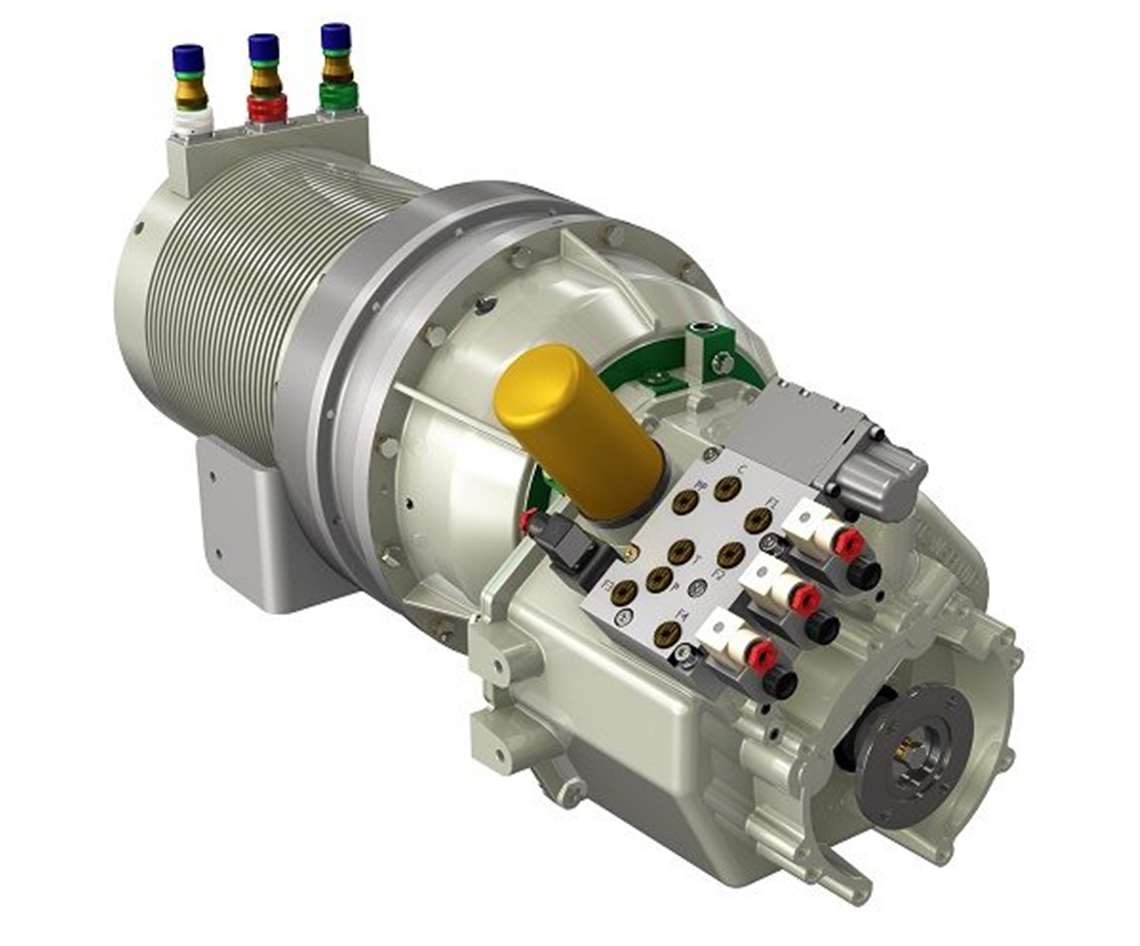Electric Motors Migrate From Sea To Land
27 October 2017

Following the introduction of its HM hybrid marine propulsion system in 2014, Transfluid has worked not only on several marine applications, but also is finding applications with a number of on- and off-road vehicle applications. Transfluid said that the hybrid system allows vehicles to operate in restricted-traffic areas with zero exhaust emissions and recovers the power released when braking, driving downhill or even just slowing down.
In parallel to the hybrid system, Transfluid has developed its own electric motors that can be used in the hybrid systems themselves and in Transfluid’s Electric Propulsion System (EPS). The Transfluid electric motors are 3-phase, permanent magnet synchronous electric machines (PMSM) with conventional air cooling. They are controlled by a motor controller (frequency drive) that allows it to work both as a motor and as a generator.
Transfluid said that the structural characteristics of the PMSM’s are optimized for specific use in hybrid systems up to 3000 rpm. The motors are designed for offer high efficiency and simplicity in application, Transfluid said, with a limited weight and size, while the design integration of the range of electric machines with the controllers allows for a compact installation of the system.
The electric motors by Transfluid are available in various sizes, from the smaller EM-180-8 with 8 kW power output in motor mode, up to the EM-290-75 with 75 kW output. When used in Transfluid’s EPS for industrial applications, these motors can be coupled to the Rangermatic automatic powershift transmission. The reduction ratios of this transmission allow to use the optimal ratio according to the operating conditions, thereby exploiting in full the characteristics of the electric motor.
The EPS system can be equipped also with the DP280 dropbox mounted on the output side. This provides additional gear ratios and further optimizes the electric motor performances. It also allows creation of an electric vehicle with four-wheel drive, with an identical use and driving mode as that of a vehicle with combustion engine. The presence of batteries allows a vehicle to recover the kinetic energy during deceleration and braking and to store energy that would otherwise be lost, increasing the autonomy of the vehicle.
For more information: www.transfluid.eu
STAY CONNECTED




Receive the information you need when you need it through our world-leading magazines, newsletters and daily briefings.
POWER SOURCING GUIDE
The trusted reference and buyer’s guide for 83 years
The original “desktop search engine,” guiding nearly 10,000 users in more than 90 countries it is the primary reference for specifications and details on all the components that go into engine systems.
Visit Now
CONNECT WITH THE TEAM









